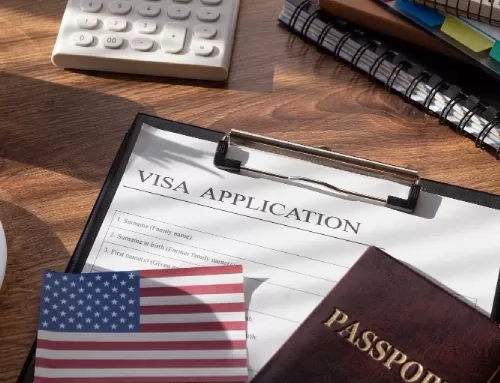Introduction
Family-based Green Cards enable U.S. citizens and/or permanent residents of the United States to sponsor their family members. This is among the most common ways families in the U.S. can reunify and build a future together. Obtaining a family-based Green Card might appear complicated, but it can be much easier when individuals understand the process. In this guide, we will cover the varying types of family Green Cards, the step-by-step application process, required documentation, processing times, and other valuable details. By the end of this guide, you will have a thorough understanding of how to start and successfully reunite with your family in the U.S.
What is a Family-Based Green Card?
A family-based Green Card, also called a family-based immigrant visa, permits certain close relatives of U.S. citizens and permanent residents to live and work permanently in the country. It is considered a pipeline for family reunification, and it comes with many benefits, including work authorization, travel rights, and a path to U.S. citizenship. Family-based Green Cards are grouped into two broad categories: immediate relatives and family preference categories. Immediate relatives are spouses, parents, and minor children, and the family preference categories are adult children, siblings, and married children of citizens and permanent residents.
Types of Family-Based Green Cards
Green Card for a Spouse (IR-1 or CR-1)
A Green Card for a spouse enables U.S. citizens to bring their foreign spouse into the U.S. permanently. IR-1 visas are for couples married for more than two years, while the CR-1 visa is for couples married for less than two years. The process also involves demonstrating a bona fide marriage, such as joint bank accounts, shared lease agreements, and photos. You file Form I-130, attend an interview, and receive background checks.
Fiancé Visa (K-1)
A K-1 visa is a nonimmigrant visa that lets a U.S. citizen’s fiancé enter the U.S. to marry. The couple must be married within 90 days of entering. After their marriage, the foreign spouse may apply for an adjustment of status for a family-based Green Card. The process entails showing evidence of the bona fide nature of the relationship. Proof of the marriage includes but is not limited to, correspondence, images, and travel records.
Parent Green Card (IR-5)
The IR5 visa is a Parent Green Card that enables U.S. citizens to sponsor their parents for permanent residency. This category is available only to citizens of the United States who are at least twenty-one years of age. This involves submitting an Affidavit of Support, which confirms that your income level meets the standard for financial stability and showing an authentic parent-child relationship with birth certificates or other official documentation.
Apply Green Card for Siblings (F-4)
Siblings apply for a Green Card in the family preference category, meaning processing takes a long time. A U.S. citizen may sponsor their brother or sister, which can be a lengthy process that involves an annual visa limit. The petition must include birth certificates demonstrating a mutual parent, financial sponsorship, and USCIS approval.
Child Green Card (IR-2, F-2A)
Children of citizens of the United States (IR-2) or Green Card holders (F-2A) The child has to be unmarried and under 21. Any child under 18 who obtains a green card will automatically become a U.S. citizen if one of the parents is a U.S. citizen.
Steps to Apply for a Family-Based Green Card
Determine Eligibility
Eligibility is based on your (the sponsor) status (U.S. citizen or Green Card holder) and your relationship with the applicant. Immediate relatives have a quicker process, while family preference categories may experience longer waiting times due to visa limits.
Submit Form I-130 (Petition for Alien Relative)
Filing Form, I-130 with USCIS is the first step one must take in applying for a family-based Green Card. It demonstrates the qualifying family relationship between the U.S. sponsor and the applicant.
Wait for USCIS Approval
After Form I-130 is submitted, USCIS will review the application, which may take several months to over a year. Approval timing varies depending on the applicant category and country of origin.
Visa Availability
Visas are always available for immediate relatives. However, family preference categories could wait years to immigrate because of visa caps each year. The U.S. Department of State publishes the Visa Bulletin to help applicants monitor visa availability.
File for Adjustment of Status or Consular Processing
- Adjustment of Status: If the applicant is present in the U.S., they file Form I-485 to adjust their status without leaving the country.
- Consular Processing: If the applicant is outside the U.S., the interview occurs at a U.S. embassy before the family-based Green Card is received.
Attend the Interview
At the interview, either USCIS or a consular officer will review the documents and ask specific questions to confirm the relationship. The interview is significant, and any wrong or incomplete answers may result in denial.
Green Card Approval
If things go smoothly, the applicant will be granted a Green Card and can start a new life in the United States.
FAQ
Need Assistance with Family-Based Green Cards?
Getting help with Family-Based Green Cards Deciding to apply for a family-based Green Card can be daunting due to complex documentation, path options, and lengthy processing times. Getting professional help can help ensure that you have correctly filled out your application. Attorney Rivera’s legal team can help.
We specialize in family Green Cards and offer customized support for sponsoring Green Cards for parents, spouses, children, and siblings. With years of expertise in immigration law, we can help you go through the process, avoid mistakes, and respond effectively to any requests from USCIS. Contact Attorney Rivera today for expert help with your immigration needs in West Palm Beach.






